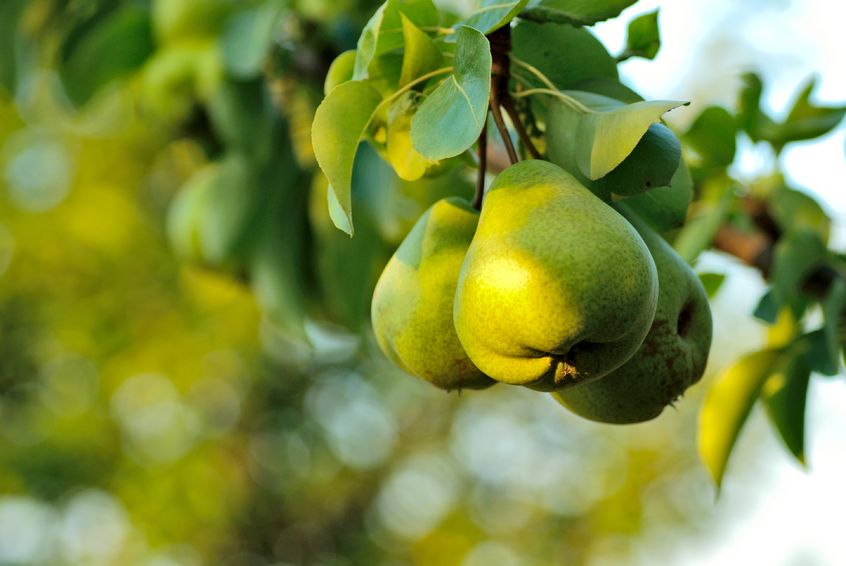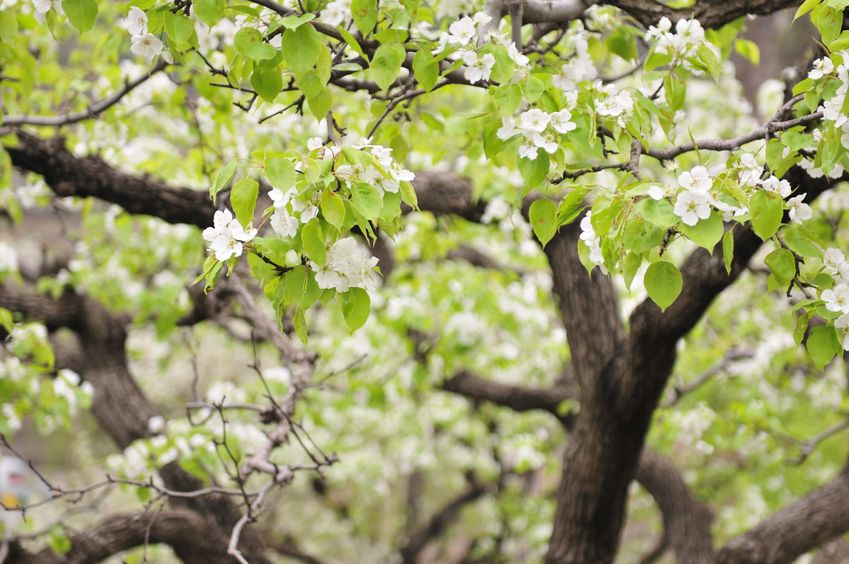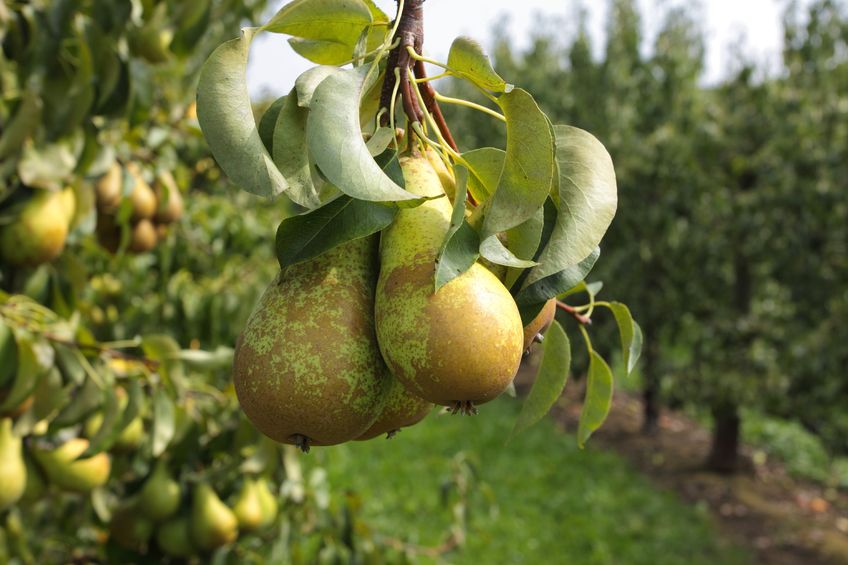Pear (Pyrus communis)
The pear—everyone knows it, and almost everyone loves it! The history of the pear has long been intertwined with that of humanity. All the more reason to learn a little more about this delicious fruit. And who knows, maybe you'll even end up planting a pear tree in your garden?

Cultivation – How does it work?
If you have limited space in your garden, that shouldn't be a reason to forgo growing a pear tree. Instead, choose slow-growing varieties and low-growing tree forms, such as bush trees. An average pear tree requires an area of approximately 12 square meters and grows to a height of 2 to 8 meters, depending on the variety. Alternatively, you can grow it as a wall espalier. This is where the fruit ripens best anyway.
The ideal season is either fall or spring. Loosen the soil deeply before planting. Pear trees are not self-fertile. Therefore, it's best to plant another variety as a pollinator to ensure the blossoms are adequately fertilized. Varieties like Frühe from Trevoux, Köstliche from Charneu, or Madame Verte are ideal for this.
Location – Where is best?
When choosing a location for your pear tree, make sure it's sunny and somewhat sheltered. The soil should ideally be deep, nutrient-rich, and loamy. Fertilizing with humus also promotes better growth and a richer harvest.
Care – What needs to be done?
With pears, it's important to ensure proper pruning. So, prune and thin out regularly. In hot weather, the plants also need plenty of water. Your pears will appreciate additional mulching around the tree and will reward you with a more bountiful harvest.
Harvest – What should you consider?
Depending on location and variety, pears ripen between August and October—sometimes even into November. It's best to pick the fruit with the stem attached; it should come off the trunk with a gentle twist. If you can't reach the fruit by hand, an apple picker can help you harvest the pears.
The fruits are perfect for eating fresh, but they can also be used to make compotes, fruit desserts, juice, cakes, dried fruit, liqueur, or wine.

Botany – What kind of plant is this?
Pear trees, or pear bushes, are deciduous plants belonging to the rose family. Depending on the rootstock, variety, and pruning, they can grow in a variety of shapes and heights. On average, pear trees reach an age of approximately 70 years.
Pears bloom in April; five bright white petals make the hermaphrodite pear blossom a true eye-catcher. Since it is self-sterile, it requires a suitable pollen source nearby. Hidden within the fruit flesh are woody cells called stone cells.
Cultural history – How did the pear come to us?
Along with the apple, the pear is one of the oldest cultivated plants cultivated by humans, and they share a long shared history. Both fruit varieties were cultivated and cultivated in China as early as 7,000 years ago. Greek mythology even says that pears are a "gift from God." Thus, through targeted breeding and random production, a multitude of pear varieties emerged: 40 varieties from the ancient Romans, 300 varieties in 17th-century France, and around 1,000 varieties in the 19th century. Today, this number has even surpassed, and an estimated 5,000 pear varieties are now known worldwide.
Varieties – Which are recommended?
Depending on the ripening time, pears are divided into summer, early autumn, autumn and winter varieties.
The most popular summer varieties include:
Williams Christmas Pear:
Ripe from mid-August/early September, ready to eat until the end of October
Early from Trevoux:
Ready to pick and eat from August, only keeps for two to three weeks
Stuttgart goatherd:
Ready for picking at the end of August, ready to eat until September
The most popular early autumn varieties include:
Gellert's Butter Pear:
Ready for picking from the beginning of September, ready to eat until October
Good Luise:
Ready to pick from early/mid-September, ready to eat from late September, best before January
The most popular autumn varieties include:
Conference:
Ready to pick and eat from September, can be stored until October if picked hard
Condominium:
Ready for picking from September, ready for consumption from October to December
Charles Ernest:
Ready for picking September/October, keep until November
Delicious from Charneu:
Ready to pick and eat from mid-October, can be kept until the beginning of November
Alexander Lucas:
Ready to pick from September/October, harvest green for storage (at about 0.5°C), keep until January
Jules d'Airolles:
Ready to pick from October, can be stored for a while, can be kept until December
The most popular winter varieties include:
Pastor's pear:
Ready for picking from October, ready for consumption December/January, warm locations preferred
Countess of Paris:
Ready to pick/eat in November, can be kept until January
Nordhausen Trout Pear:
Ready for picking from October, ready to eat from the end of November, best before January
Madame Verte:
Ready for picking from October, ready for consumption from December, best before February
TEXT: Carina Naeve









































































































